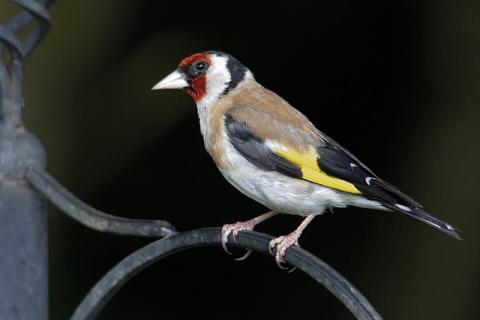Goldfinches of Martin Top

After last evening’s service, we could hear the goldfinches singing in the trees. Ever a social bird, one may hear them sing their song as they fly from one tree to another. Medieval folk often associated this finch wuth Christ because of its appetite for thistle seed; their hearty consumption lessens the spread of the Fall’s spiny consequence. It is their colourful and exotic appearance that fascinates me, however. We Englishmen are used to birds being grey and brown, camouflaging themselves against our caliginous woodlands. Yet the goldfinch’s bold yellow and red bespeak of more tropical climes. Chaucer’s The Cook’s Tale uses our feathered friend as a picture of a brightly dressed man:
A prentys whilom dwelled in oure citee,
A apprentice once dwelt in our city,
And of a craft of vitailliers was hee.
And of a craft of food merchants was he.
Gaillard he was as goldfynch in the shawe,
Gaily dressed he was as is a goldfinch in the woods,
Broun as a berye, a propre short felawe,
Brown as a berry, a good-looking short fellow.
(Harvard College text)
Most Christians, myself included, are plain folk. Not many of us are noble, or wise or wealthy. We are the sparrows and the dunnocks:
But God hath chosen the foolish things of the world to confound the wise; and God hath chosen the weak things of the world to confound the things which are mighty.
The world’s colourful, dazzling folk are fading away, but the Christian only grows brighter and more vibrant the closer his or her homecoming dawns. We might be sparrows today, but we'll be goldfinches tomorrow.
Image by de_zigeuner from Pixabay
- Log in to post comments


 Sunday Worship 10.45am & 6.00pm
Sunday Worship 10.45am & 6.00pm